Health Benefits of Quinoa Noodles:
- Complete Protein Source:
- Quinoa is a complete protein, meaning it contains all nine essential amino acids required for human health. This makes quinoa noodles an excellent choice for vegetarians and vegans seeking a high-quality protein source.
- High in Fiber:
- Quinoa is rich in dietary fiber, which aids digestion, promotes regular bowel movements, and helps manage cholesterol levels. The fiber content also contributes to a feeling of fullness, supporting weight management.
- Gluten-Free:
- Quinoa is naturally gluten-free, making quinoa noodles a great option for individuals with celiac disease or gluten intolerance.
- Rich in Vitamins and Minerals:
- Quinoa is a good source of essential vitamins and minerals, including B vitamins, magnesium, iron, potassium, and zinc. These nutrients support various bodily functions, from energy production to immune system health.
- Antioxidant Properties:
- Quinoa contains antioxidants such as flavonoids, which help combat oxidative stress and inflammation, potentially reducing the risk of chronic diseases.
- Supports Heart Health:
- The combination of fiber, antioxidants, and healthy fats in quinoa supports heart health by helping to lower cholesterol levels, regulate blood pressure, and reduce inflammation.
- Aids in Blood Sugar Regulation:
- Quinoa has a low glycemic index, which means it releases sugar slowly into the bloodstream, helping to stabilize blood sugar levels and manage diabetes.
How Quinoa Noodles Are Made:
Quinoa noodles are typically made by incorporating quinoa flour into the dough. Here’s a general outline of the process:
- Quinoa Flour Noodles:
- Step 1: Quinoa grains are cleaned, cooked, and then dried and ground into a fine flour.
- Step 2: Quinoa flour is mixed with other flours (such as rice flour or tapioca flour) and salt. The other flours help achieve the desired texture and consistency of the noodles.
- Step 3: Water is gradually added to the flour mixture to form a dough. The dough is kneaded until it becomes smooth and pliable.
- Step 4: The dough is shaped into noodles using a noodle press, pasta machine, or by hand-rolling and cutting.
- Step 5: The noodles are boiled until tender, then drained and ready to be used in various dishes.
Cooking with Quinoa Noodles:
Quinoa noodles have a mild, slightly nutty flavor that complements a variety of ingredients. Here are some ways to use them:
- Stir-Fries:
- Cook quinoa noodles and stir-fry them with a mix of vegetables, tofu, or chicken, and a light sauce made from soy sauce, garlic, and ginger. The nutty flavor of the noodles enhances the overall dish.
- Noodle Bowls:
- Create a wholesome noodle bowl by combining quinoa noodles with fresh greens, roasted vegetables, and a protein source like grilled fish or tempeh. Top with a flavorful dressing or sauce.
- Soups:
- Add quinoa noodles to broths or soups for a nutritious twist. They work well in both light vegetable soups and richer, coconut-based broths.
- Salads:
- Use cooled quinoa noodles in cold salads, mixing them with fresh vegetables, herbs, and a tangy vinaigrette for a refreshing and nutritious meal.
- Fusion Dishes:
- Incorporate quinoa noodles into fusion dishes, such as Asian-inspired noodle salads or Mediterranean-style pasta dishes. Their unique flavor and texture can complement various cuisines.
Storage and Availability:
- Storage: Dried quinoa noodles should be stored in an airtight container in a cool, dry place. Fresh noodles can be refrigerated and should be used within a few days.
- Availability: Quinoa noodles can be found in health food stores, organic markets, and online retailers. They can also be made at home using quinoa flour.









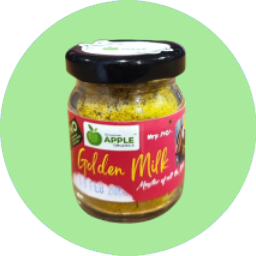












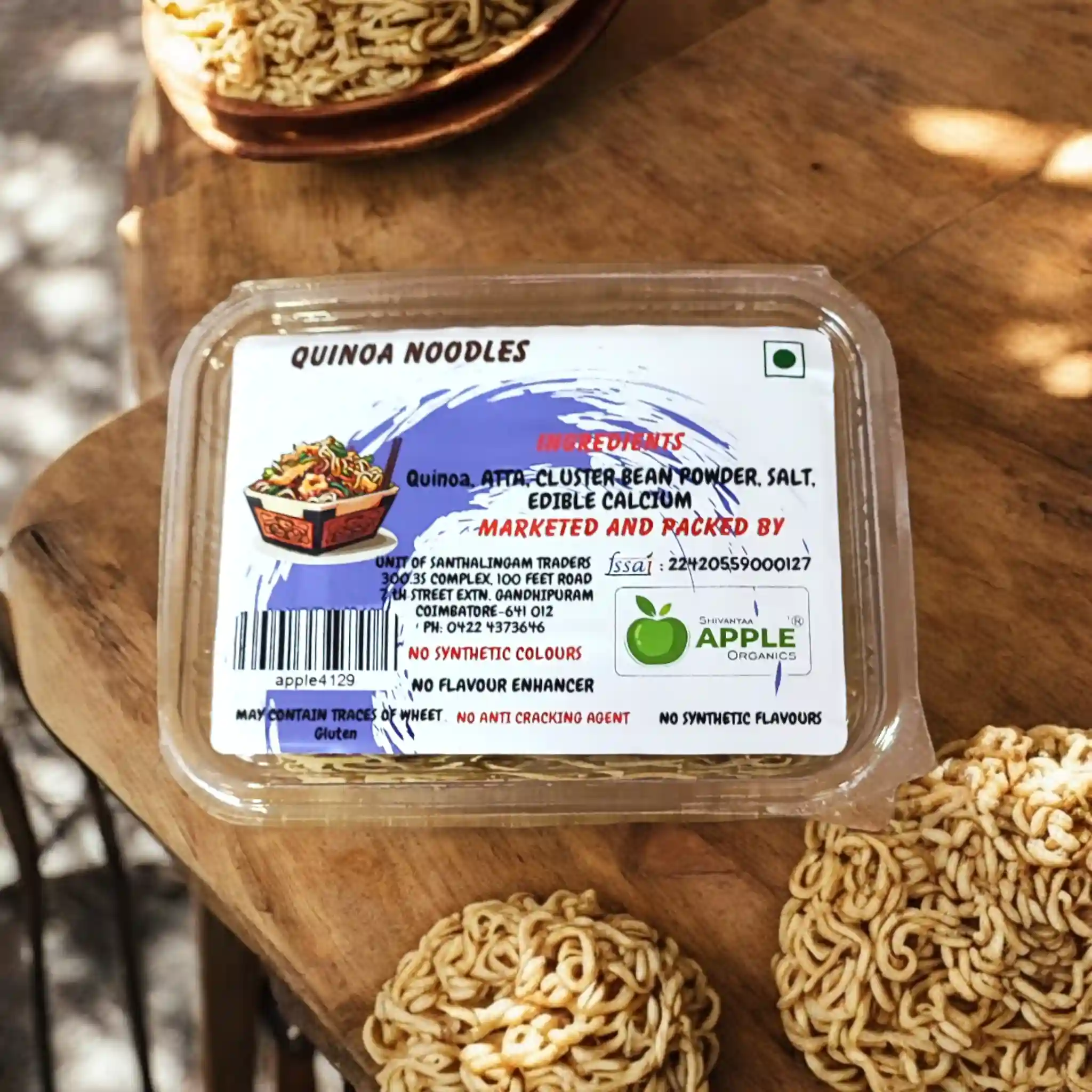
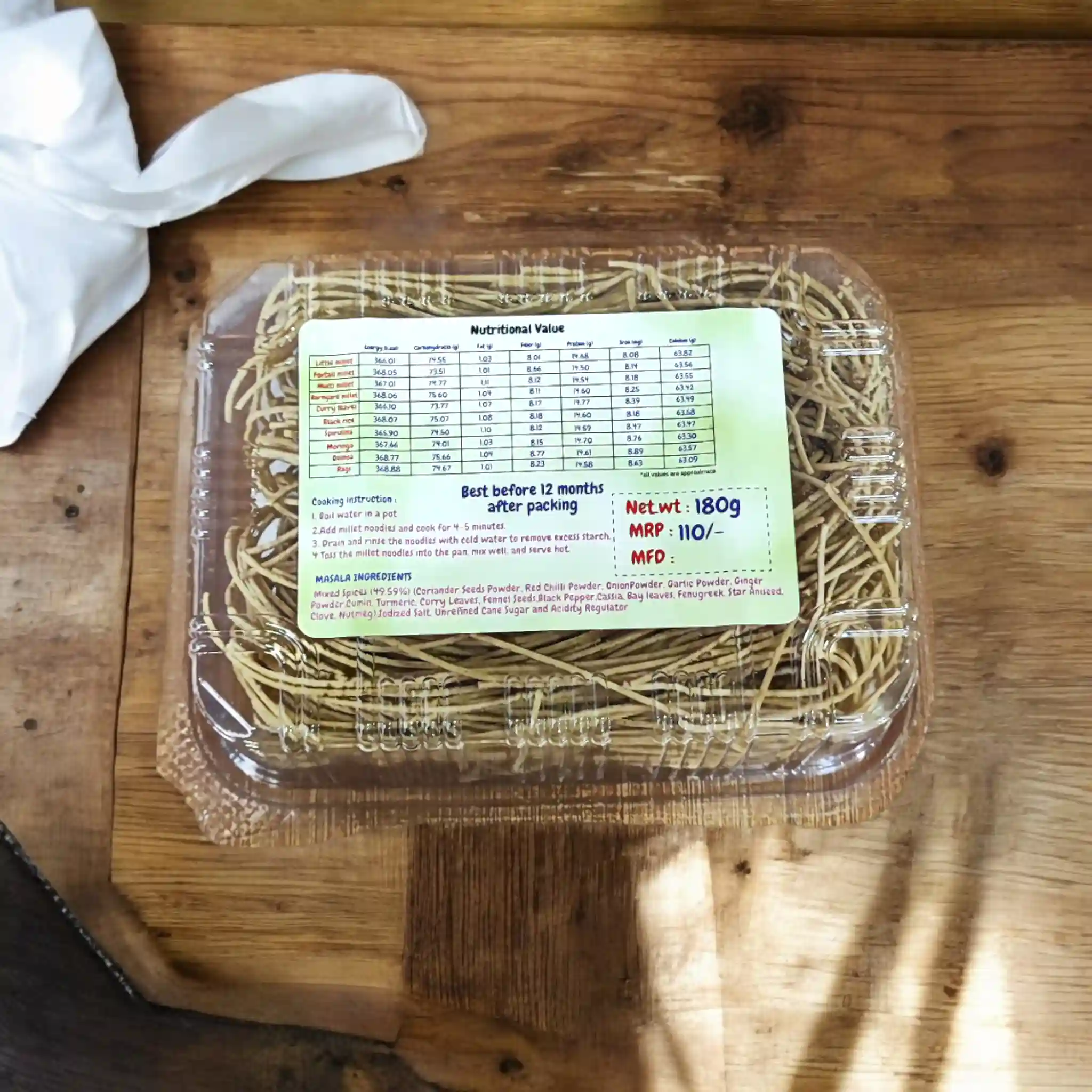
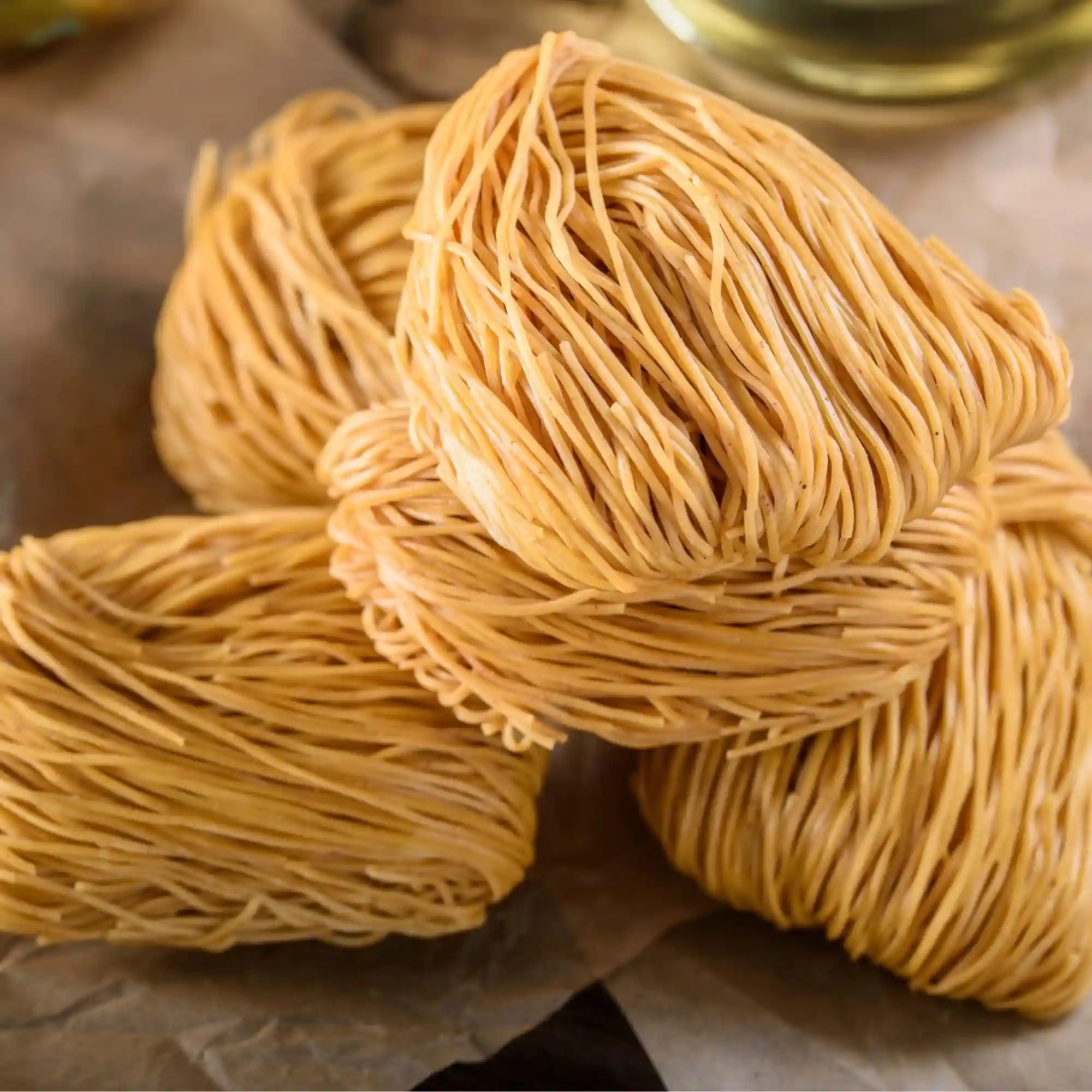

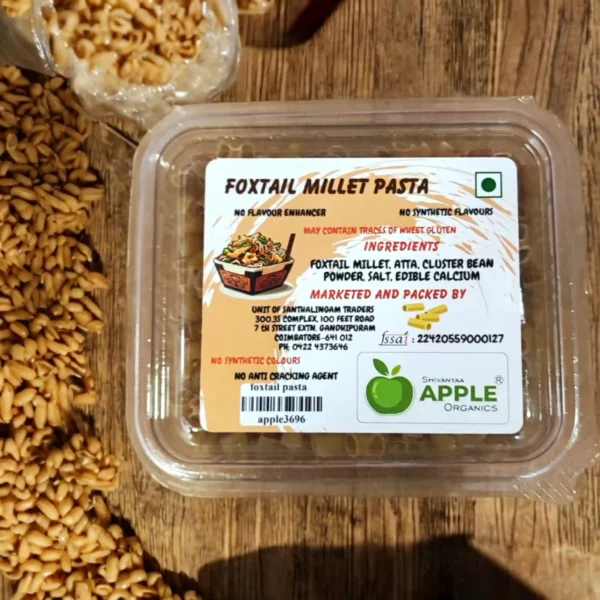
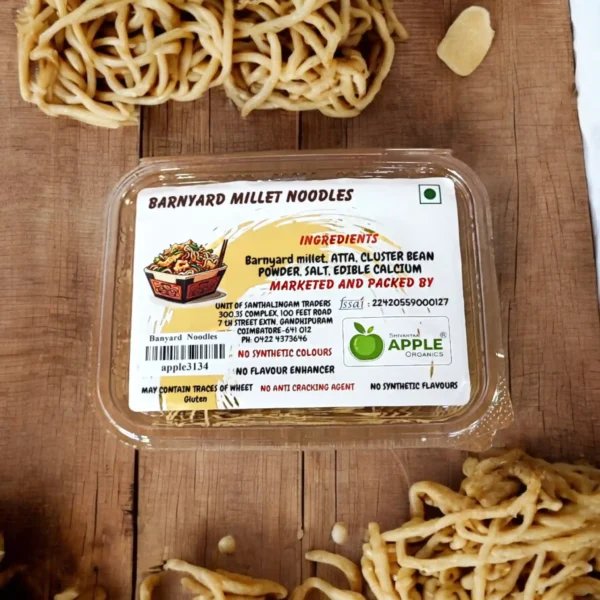
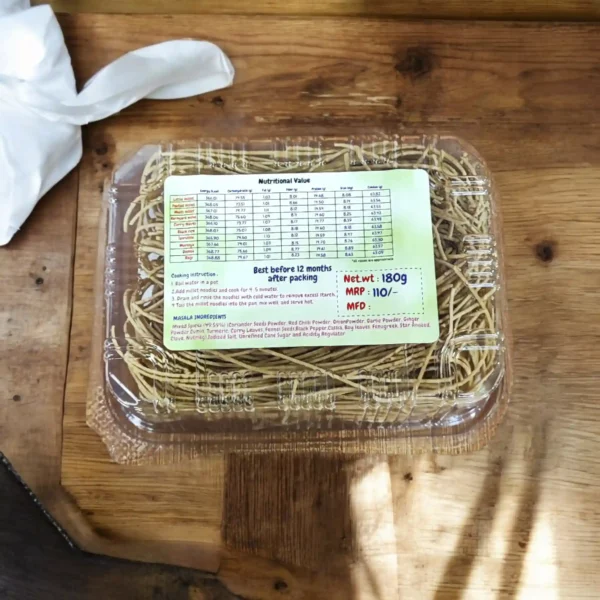

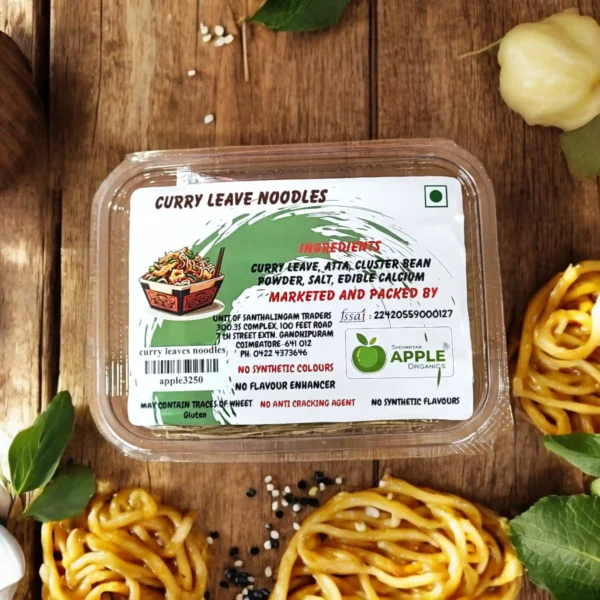
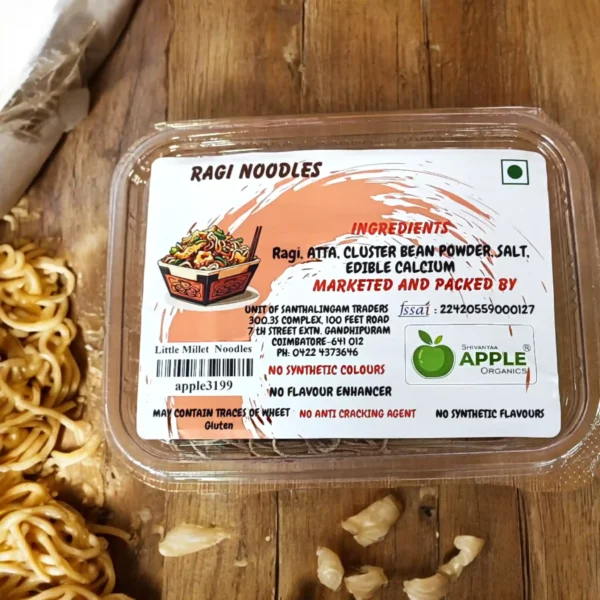

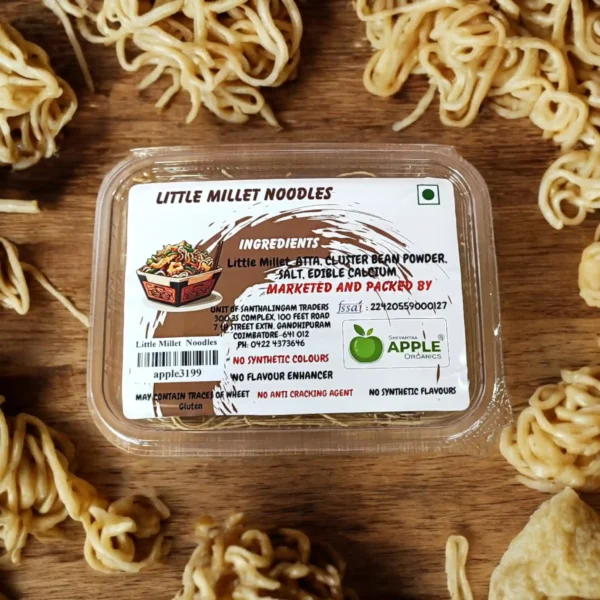


Reviews
Clear filtersThere are no reviews yet.